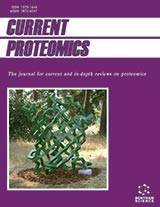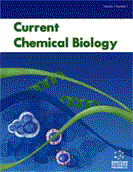Abstract
Fullerenes are carbon allotropes, and they have called the attention of scientists in the last 15 years. In nanotechnology, fullerenes have had several promising applications in medicinal chemistry, pharmaceutical sciences, biomedicine, and related disciplines. Particularly, the design and biological evaluation of fullerene-C60 derivatives as antimicrobial agents constitute essential components of several active areas of research that continue to grow. There is a serious concern due to the emergence of resistance of pathogens to current antibiotics, and consequently, the task of finding new and more efficient antimicrobial therapies is increasingly challenging. This review is devoted to discuss the most recent advances in the discovery of structures containing fullerene-C60 as models of nanoentities-based antibacterial agents. In addition, by considering the role of the toxicity associated to the nanoparticles, we introduce a general multitasking model for quantitative-structure biological effect relationships (mtk-QSBER). This model was created from a heterogeneous dataset containing more than 47200 statistical cases, and it was focused on performing simultaneous predictions of multiple ADMET (absorption, distribution, metabolism, elimination) properties. The mtk-QSBER model could correctly classify more than 90% of the cases in the whole database, being employed for virtual screening of diverse ADMET profiles of different molecular architectures containing fullerene-C60. The theoretical results were in agreement with the experimental evidences, confirming that the increment in the number of polar regions associated to fullerene-C60 can improve the safety profiles. At the same time, this fact demonstrated the ability of the present mtk-QSBER model to be used as an efficient tool for in silico assessment of different safety profiles of large libraries of compounds under dissimilar experimental conditions.
Keywords: ADMET, antibacterial, carriers, drug delivery, fullerene-C60, fullerols, linear discriminant analysis, mtk-QSBER, TOMOCOMD.
Current Bioinformatics
Title:Review of Structures Containing Fullerene-C60 for Delivery of Antibacterial Agents. Multitasking model for Computational Assessment of Safety Profiles
Volume: 10 Issue: 5
Author(s): Valeria V. Kleandrova, Feng Luan, Alejandro Speck-Planche and M.N.D.S. Cordeiro
Affiliation:
Keywords: ADMET, antibacterial, carriers, drug delivery, fullerene-C60, fullerols, linear discriminant analysis, mtk-QSBER, TOMOCOMD.
Abstract: Fullerenes are carbon allotropes, and they have called the attention of scientists in the last 15 years. In nanotechnology, fullerenes have had several promising applications in medicinal chemistry, pharmaceutical sciences, biomedicine, and related disciplines. Particularly, the design and biological evaluation of fullerene-C60 derivatives as antimicrobial agents constitute essential components of several active areas of research that continue to grow. There is a serious concern due to the emergence of resistance of pathogens to current antibiotics, and consequently, the task of finding new and more efficient antimicrobial therapies is increasingly challenging. This review is devoted to discuss the most recent advances in the discovery of structures containing fullerene-C60 as models of nanoentities-based antibacterial agents. In addition, by considering the role of the toxicity associated to the nanoparticles, we introduce a general multitasking model for quantitative-structure biological effect relationships (mtk-QSBER). This model was created from a heterogeneous dataset containing more than 47200 statistical cases, and it was focused on performing simultaneous predictions of multiple ADMET (absorption, distribution, metabolism, elimination) properties. The mtk-QSBER model could correctly classify more than 90% of the cases in the whole database, being employed for virtual screening of diverse ADMET profiles of different molecular architectures containing fullerene-C60. The theoretical results were in agreement with the experimental evidences, confirming that the increment in the number of polar regions associated to fullerene-C60 can improve the safety profiles. At the same time, this fact demonstrated the ability of the present mtk-QSBER model to be used as an efficient tool for in silico assessment of different safety profiles of large libraries of compounds under dissimilar experimental conditions.
Export Options
About this article
Cite this article as:
Kleandrova V. Valeria, Luan Feng, Speck-Planche Alejandro and Cordeiro M.N.D.S., Review of Structures Containing Fullerene-C60 for Delivery of Antibacterial Agents. Multitasking model for Computational Assessment of Safety Profiles, Current Bioinformatics 2015; 10 (5) . https://dx.doi.org/10.2174/1574893610666151008011628
| DOI https://dx.doi.org/10.2174/1574893610666151008011628 |
Print ISSN 1574-8936 |
| Publisher Name Bentham Science Publisher |
Online ISSN 2212-392X |
 41
41
- Author Guidelines
- Bentham Author Support Services (BASS)
- Graphical Abstracts
- Fabricating and Stating False Information
- Research Misconduct
- Post Publication Discussions and Corrections
- Publishing Ethics and Rectitude
- Increase Visibility of Your Article
- Archiving Policies
- Peer Review Workflow
- Order Your Article Before Print
- Promote Your Article
- Manuscript Transfer Facility
- Editorial Policies
- Allegations from Whistleblowers
Related Articles
-
Meet Our Editorial Board Member
Current Proteomics Vascular Endothelial Growth Factor: A New Paradigm for Targeting Various Diseases
Current Angiogenesis (Discontinued) Subject Index to Volume 9
Current Pharmaceutical Design Colon Cancer Therapy: Recent Developments in Nanomedicine to Improve the Efficacy of Conventional Chemotherapeutic Drugs
Anti-Cancer Agents in Medicinal Chemistry Recent Advances in the Characterization of Genetic Factors Involved in Human Susceptibility to Infection by Schistosomiasis
Current Genomics Caveolin Involvement and Modulation in Breast Cancer
Mini-Reviews in Medicinal Chemistry Small-molecule Inhibitors of Epigenetic Mutations as Compelling Drugtargets for Myelodysplastic Syndromes
Current Cancer Drug Targets Role of Phase II Drug Metabolizing Enzymes in Cancer Chemoprevention
Current Drug Metabolism Synthetic Nanocarriers for Intracellular Protein Delivery
Current Drug Metabolism Resistance to Anti-VEGF Agents
Current Pharmaceutical Design Tumor-Receptor Imaging in Breast Cancer: A Tool for Patient Selection and Response Monitoring
Current Molecular Medicine The Development of MetAP-2 Inhibitors in Cancer Treatment
Current Medicinal Chemistry Concomitant CXCR4 and CXCR7 Expression Predicts Poor Prognosis in Renal Cancer
Current Cancer Drug Targets Aloperine Induces Apoptosis by a Reactive Oxygen Species Activation Mechanism in Human Ovarian Cancer Cells
Protein & Peptide Letters Patents Related to Cancer Stem Cell Research
Recent Patents on DNA & Gene Sequences The Antioxidant Activity of Coumarins and Flavonoids
Mini-Reviews in Medicinal Chemistry Telomere Maintenance Mechanisms in Cancer: Clinical Implications
Current Pharmaceutical Design Role of Mechanoinsensitive Nociceptors in Painful Diabetic Peripheral Neuropathy
Current Diabetes Reviews Prognostic and Predictive Biomarkers in Cancer
Current Cancer Drug Targets Angiogenesis: A Target for Cancer Therapy
Current Pharmaceutical Design

















.jpeg)








